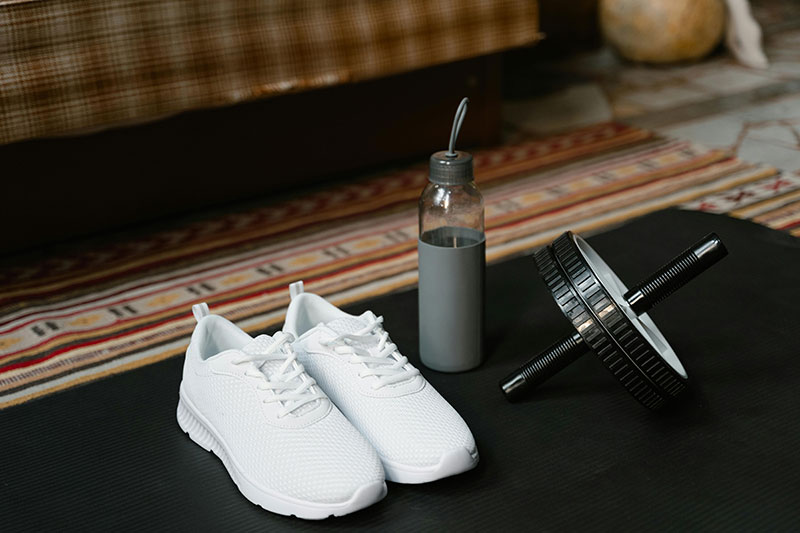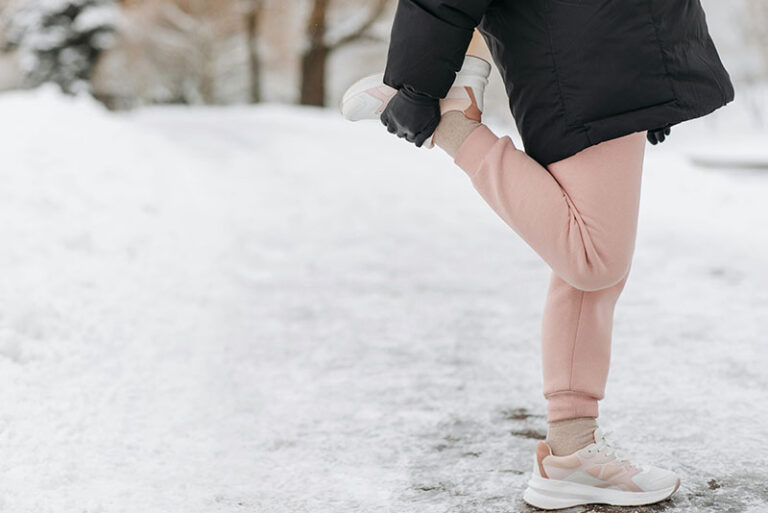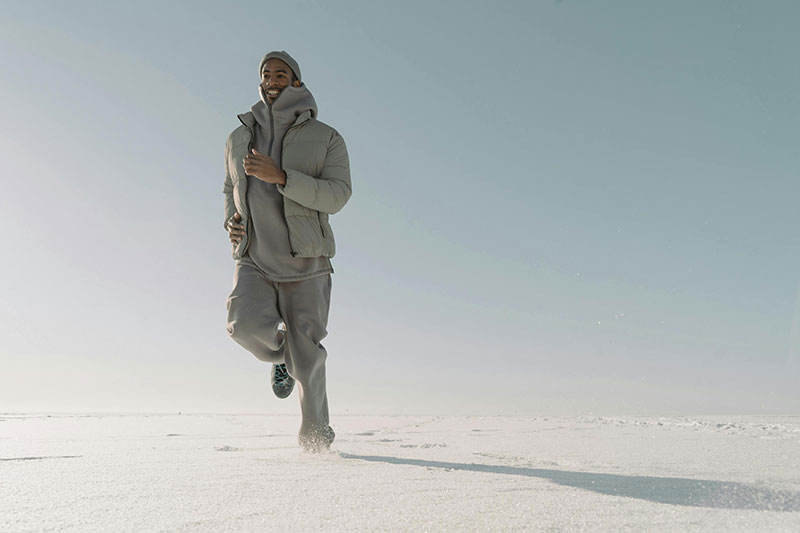- Use code CORY30 for 30% off your order and free shipping on orders over $50.
Winter Workout Essentials
Blog Categories

Winter Workout Essentials: Staying Comfortable with Moisture-Wicking Gear
When it comes to winter workouts, staying warm, dry, and comfortable is essential. Whether you’re hitting the trails for a brisk run, doing an outdoor boot camp, or simply enjoying recreational activities like hiking or snowshoeing, moisture-wicking gear is key to maintaining performance, comfort, and safety in the cold. Let’s explore why keeping your skin dry is critical for heat retention and how moisture-wicking technology works, along with examples of products that can help keep you comfortable all season long.
Why Keeping Your Skin Dry is Critical for Heat Retention
When you exercise in cold weather, your body naturally sweats to regulate its temperature. However, when sweat stays trapped against your skin, it cools your body down—sometimes dangerously so. Wet skin in cold weather can quickly lead to discomfort, chills, and even hypothermia if not managed properly.
The body’s primary method for staying warm is through its natural insulation, but if sweat accumulates and saturates your clothing, it pulls heat away from the body. This makes it harder for your body to retain the heat it produces during exercise, leaving you vulnerable to the cold. Staying dry is crucial to maintaining your body’s core temperature, helping to prevent the dangerous drop in body temperature that can occur when sweat sits against the skin.

How Moisture-Wicking Gear Works
Moisture-wicking fabrics are designed to pull moisture (like sweat) away from your skin and move it to the outer layers of the fabric, where it can evaporate more easily. Unlike traditional cotton, which absorbs moisture and holds it against the skin, moisture-wicking fabrics actively push sweat to the surface, helping to keep you dry and more comfortable. This is achieved through specially engineered fibers, often made from synthetic materials like polyester, nylon, or merino wool, that are hydrophobic (meaning they repel water) and have high breathability.
Many moisture-wicking fabrics also have antimicrobial properties, which help reduce odor buildup, keeping you fresher for longer. These materials are lightweight and fast-drying, ensuring you don’t get bogged down by damp clothing during or after your workout.
The Importance of Layering with Moisture-Wicking Gear
In winter, layering your clothing is crucial for maintaining warmth and comfort. The moisture-wicking layer should be the first layer closest to your skin, as it helps pull sweat away from the body. Your second layer should provide insulation, such as fleece or down, while the outer layer (like a waterproof jacket) shields you from wind and precipitation. This combination keeps you warm without overheating and ensures that sweat doesn’t hinder your body’s ability to maintain temperature regulation.
Examples of Moisture-Wicking Products
- Base Layers: The foundation of any winter workout outfit is the base layer. Look for moisture-wicking long-sleeve shirts, leggings, or tights made from synthetic fabrics like polyester or merino wool. These materials excel at pulling moisture away from your skin while remaining breathable.
- Socks: Keeping your feet dry is just as important as keeping the rest of your body dry. Wool and synthetic socks are excellent moisture-wicking choices to prevent dampness and blisters.
- Gloves: Your hands are especially vulnerable to cold weather. Choose gloves made with moisture-wicking materials that also offer warmth and flexibility.
- Hats and Headbands: A lot of body heat is lost through your head, so wearing a moisture-wicking hat can help regulate your body temperature and prevent sweat from dripping into your eyes.
- Jackets and Outer Layers: While your base layer wicks away sweat, your outer jacket should keep wind, rain, or snow out while still allowing for breathability.

Staying Safe and Comfortable Outdoors
The key to staying safe while exercising outdoors in the winter is to keep your body dry and warm. Moisture-wicking gear helps you regulate your body temperature by moving sweat away from your skin, preventing you from getting cold or overheated. Remember, moisture-wicking gear is only effective when combined with proper layering, as this allows for insulation and breathability.
In addition to staying dry, be mindful of your surroundings. Choose appropriate gear for the conditions, stay hydrated, and layer up to make sure you stay comfortable and safe. It’s also important to pay attention to how your body feels during winter workouts—if you begin to feel excessively cold or chilled, it may be time to head inside or adjust your layers.
Conclusion
When it comes to winter workouts, staying dry is just as important as staying warm. Moisture-wicking clothing helps to ensure that sweat doesn’t reduce your body’s ability to retain heat and that you remain comfortable throughout your outdoor activities. By investing in moisture-wicking gear, such as base layers, socks, gloves, and outerwear, you can enjoy your winter workouts with confidence—knowing you’ll stay dry, safe, and ready for whatever the season has in store. Stay warm, stay dry, and keep moving!
